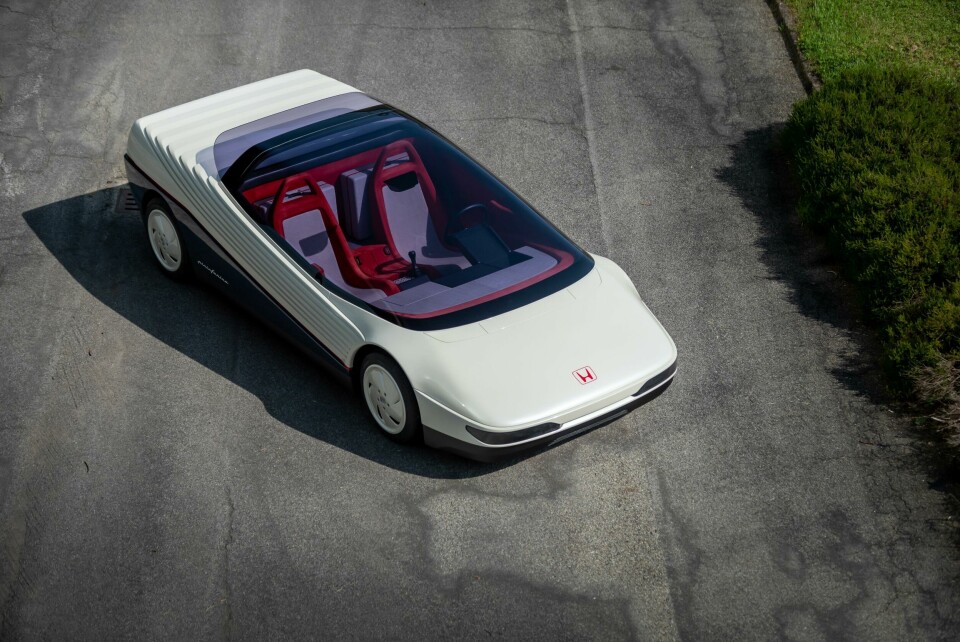
Pininfarina CCO on restoring Honda’s first ever concept car
The Honda HP-X has been beautifully restored by Pininfarina, capturing an iconic glimpse in time. But instead of feeling nostalgic, the design team is looking ahead to challenge market convergences
The Honda HP-X made its global premiere at the Turin Motor Show back in 1984. A slick two-seater wedge with a giant greenhouse and digitalised cockpit, the car was designed in collaboration with Pininfarina and marked the first ever concept from the Japanese marque. Although it never entered production, the HP-X embodied a design approach that stood the test of time, and had a decisive impact on many models to come.
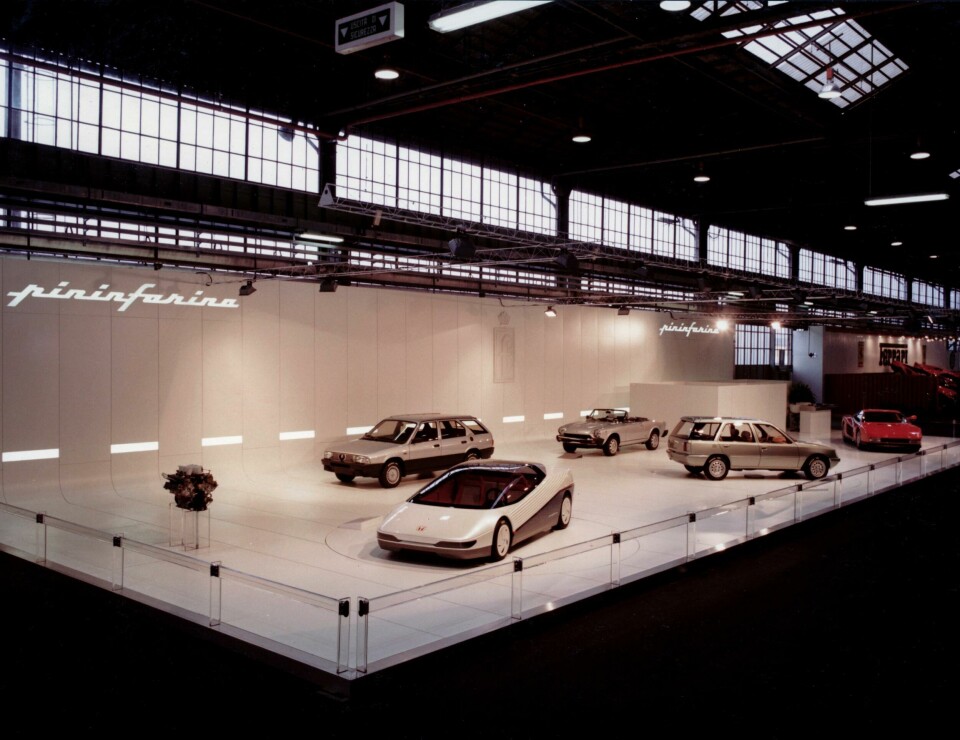
It resurfaced at the 2024 Pebble Beach Concours d’Elegance in California following extensive restoration. CDN sat down with Felix Kilbertus, chief creative officer at Pininfarina, to get an insider’s view of the project, and to find out why the HP-X is an important model for both Honda and Pininfarina.
Car Design News: You’ve been at Pininfarina for over a year now. How have you been settling in, and what was the transition like from Rolls-Royce to Pininfarina?
Felix Kilbertus: I joined Pinininfarina last April, just in time for the 2023 Shanghai Auto Show. It felt like the right moment as the world fully opened up again following the pandemic years. With massive changes disrupting the automotive landscape, becoming part of a global design agency offers a unique change in perspective.
Stepping out of one singular vantage point and grasping the shifts in the mobility sector from various angles, focusing on our client’s needs and interests, is hugely rewarding. I’m truly grateful for the previous six years spent at Rolls-Royce and I was fortunate to lead the exterior design team during the brand’s historical transition towards a fully electric future, with Spectre leading the way for the next generation of products.
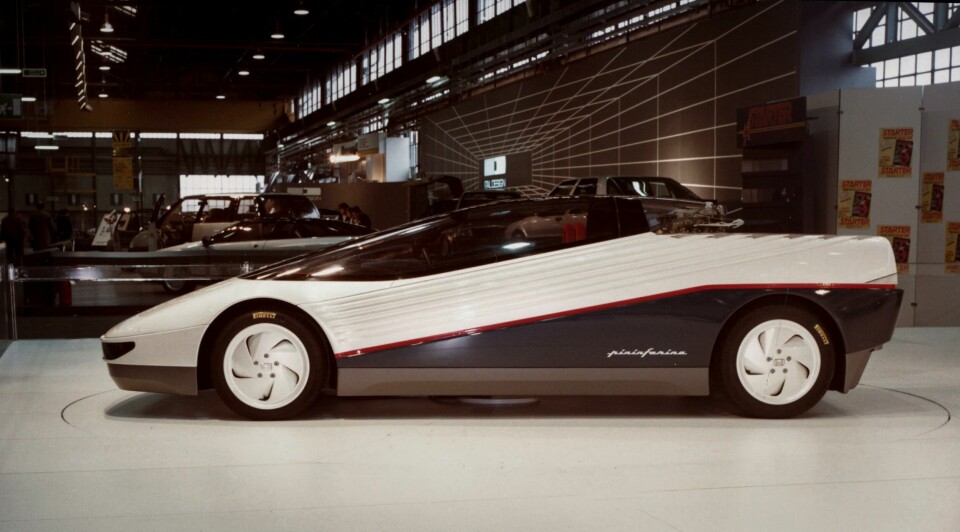
Building on Ghost’s ‘Post Opulence’ minimalist design ethos, we focused on proportions and letting the incredible materials and craftsmanship really take centre stage. As a team, we also delivered a comprehensive refresh for the Cullinan Series II, including what might turn out be the very last combustion engine exhaust tip, ever, for a Rolls-Royce. This experience taught me that even the most storied brands are in constant need of reinvention, and this is what I see as a common mission with my new role.
CDN: Have you already seen a reinvention at Pininfarina?
FK: With its 95th anniversary coming up in 2025, Pininfarina is the ‘grand dame’ of Italian Design houses, but a company must not age – it can never become indulgent in its own past or in memories of bygone youth. To remain relevant, each project and each client needs its own fresh solution. Fostering this heritage, what we internally call the ‘tradition of innovation’, is what I see as one of my key goals for Pininfarina design.
I am fortunate to have found a highly talented and experienced creative team in our studios in Cambiano, Milan, Shanghai, Miami and New York. The initial challenge of getting to know such a vast team and working in dynamic circumstances is gradually giving way to building up future proof competences and adapting to the ever evolving technological changes in our field. But for all the change and volatility, the strong core belief is that beauty and innovation fused together creates positive impact, and is essential for the successful collaboration with our partners.
CDN: Can you explain how the HP-X Concept project started? Why did you and your team decide to restore an old vehicle, and what made this particular model suitable?
FK: The HP-X is unique as it represents the first symbol of Pininfarina’s collaboration with Honda, but more importantly, it was also the very first concept car ever presented by Honda. Last year, we were very happy to receive a request from Honda of North America to enter the HP-X concept into the 2024 Concours d’Elegance at Pebble Beach.
After studying its condition in our storage facilities, it became clear that some essential restoration was necessary ahead of any public display, as certain materials employed 40 years ago had deteriorated with time. However, the base was sound, so we were happy to oblige and proceed with the efforts to bring the concept back to its original shape. Fortunately, all restoration work could be handled in-house by the same team that builds design prototypes and limited production cars to this very day.
The canopy is a highlight for me
CDN: What did the HP-X represent in terms of design in the 1980s?
FK: 1984 was the year “Return of the Jedi”, the last of the original Star Wars trilogy, came out. Movies with powerful special effects such as “E.T.”, “Blade Runner”, “Tron”, “Ghostbusters” and “Back to the Future” dominated the box office, all leaving lasting marks on our collective imagination of the future. This time was also a moment of intense superpower rivalry, with TV shows like “Dallas” influencing global audiences with its depictions of capitalist consumer lifestyle.
Orwell’s dystopian “1984” had not materialised, at least not in the form the author had intended. The malaise of the 1970’s was gone and a new, bold and confident aesthetic revolutionised the western world. In popular culture, this period aesthetic is probably most consistently felt in the production design of “Miami Vice”, aired for the first time in 1984, perhaps aided in part by the telegenic presence of the Ferrari Testarossa, another Pininfarina design presented at the 1984 Turin Motor Show.
FK: I feel that this period generally represents a high watermark for original, futuristic and sci-fi inspired design. Gone was the chintzy chrome and bulbous metal of the postwar years, and in came a new lean and linear approach. LEDs and structural plastic elements allowed for new forms and functions in increasingly high-tech appliances and cars, with a fresh flushness and precision that must have felt very modern at the time. For the first time ever, a ‘digital’ esthetic with radical graphics and colours captured the imagination of designers and consumers alike.
Many such new design possibilities influenced the shapes on the HP-X, like the parallel louvres that structure the entire car graphically, or the push buttons on the matte black centre console. A wedge-shaped centerline defines the forward silhouette, while the sharp inverse-slanted break behind the cabin, created by the roof spoiler, emphasises the mid-rear engine layout. All of this is held together with a powerful graphic device: a thin red stripe running around the car, fusing the bright upper half of the car with the dark lower body.
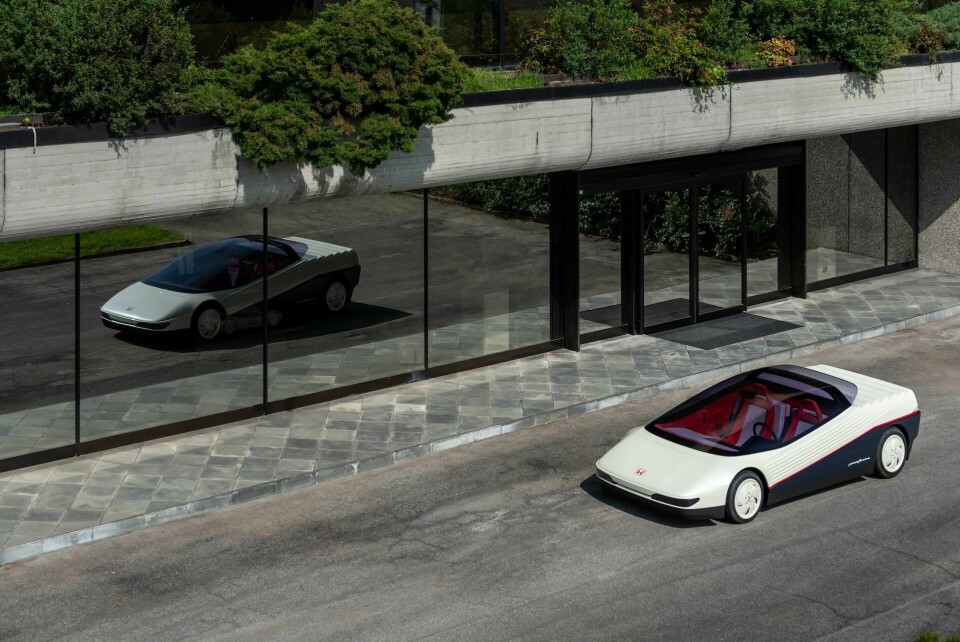
CDN: What are the key design highlights of the HP-X for you personally?
FK: The canopy is a highlight for me, intended to lift and tilt forward for access. Simple, lightweight, but probably a little optimistic even back then, when it comes to keeping the passengers cool and protected from heat and glare. The strong split in an upper and lower body is a typical Pininfarina design element, pioneered on the Pininfarina Ferrari Modulo in 1970, featuring for the first time a red line graphically binding the two halves together. Here on the HP-X, this line comes with a distinctive wedge and kink, in the process somehow becoming a missing link between the 1981 Audi Quartz concept with its horizontal split and the 1993 Alfa Romeo GTV and Spider with their distinctly angled split line.
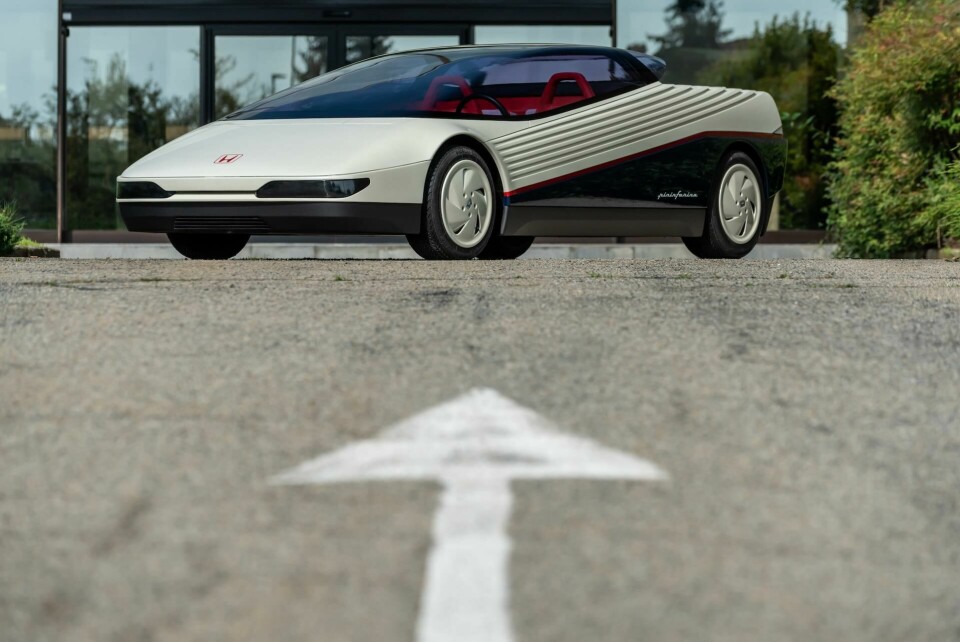
The strictly parallel and angled louvres that structure the body side and then wrap neatly into the cooling vanes on the rear deck are this car’s single strongest design element. This treatment is a defining 1980’s element for me, where structural plastics and lean line work lent a new look to both consumer products and cars. It speaks of a brave spirit, using new shapes without nostalgia, giving the car an efficient and almost digital look, not unlike the products Nintendo or Sony made at the same time.
While this Pininfarina “ribbing” is famously featured on the Testarossa, I find it most successfully deployed in series production on another Pininfarina design, the Alfa 164. Its remarkable dashboard, the centre stack and air vents, as well on the bumpers and body cladding derive their unique character from this effective design treatment.
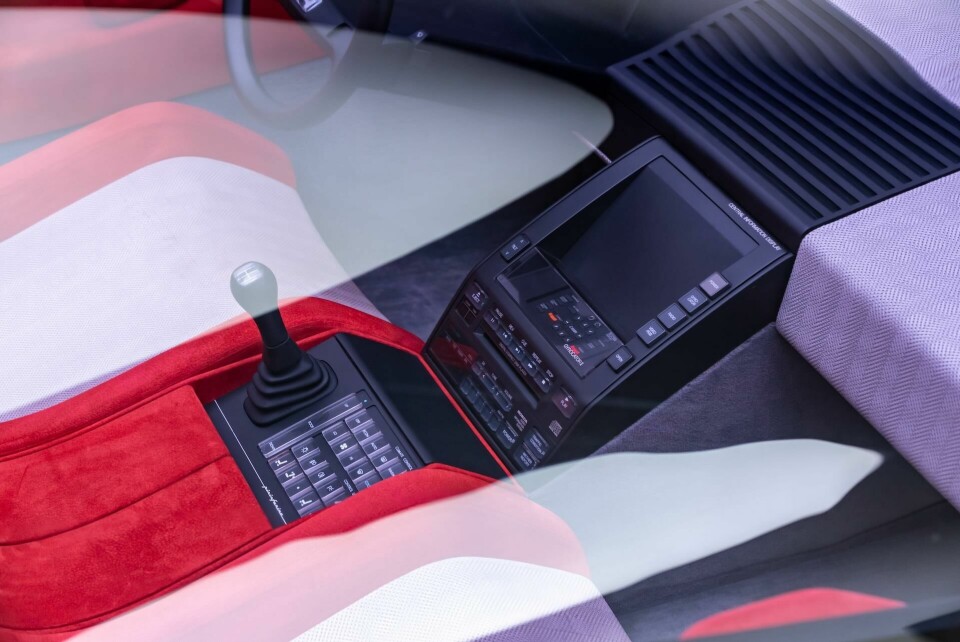
CDN: What do you think of the cabin design? The red suede is fancy!
FK: The interior is the forgotten hero of this car. I like the usage of a soft grey textured fabric for large parts of the seats and dashboard, and the clever usage of a red alcantara-like contrasting material, echoing the red badging and detailing on the exterior. The seats are lightweight yet invitingly simple. The grab handles are really sculptural work, noteworthy for their essentiality, while the integrated luggage pieces behind the passenger seats might have become a very welcome storage solution on road trips.
The low and inclined dashboard is an exercise in restraint, and the flush execution between matte black elements and the grey fabric panels brings to mind the tatami flooring of traditional Japanese architecture. All the commands relevant to the driver are consistently treated in a matte black material, with transparent inlays on the manual gear shift, all switchgear and the buttons for the advanced telematic controls envisaged. Even the steering wheel looks lightweight and feels modern, with its single horizontal bar featuring the Honda badge, suspended by a shelf-like steering column, leading the eye directly to the large digital driver display. Together with the second square screen in the centre console, this layout looks remarkably familiar today, yet was by no means common in 1984.
CDN: Did the HP-X’s design influence subsequent Honda models, and perhaps models from other companies?
FK: It was the first ever Honda concept car, so it has a special significance for that fact alone. Even though the HP-X did not enter production, one could trace its influence in different ways. For example, an echo of its monovolume wedge shape can be found again in the Honda Kiwami concept or the more recent Honda O (zero) Series. The rear midship engine layout leads to the Honda NSX and the Honda Beat, designed by Pininfarina – and of which we are proud to have a pristine sample in our collection.
The front end graphics, with a pure grille-less design connecting a pair of fully integrated front lamps anticipated some later series car solutions at Honda and beyond. On the rear, the horizontal light bar and the integrated diffuser in the lower bumper could be seen as a starting point for the NSX’s rear aspect. While sporting very different side profiles, the HP-X and NSX both feature a tinted glass greenhouse above the beltline, with blacked-out pillars, underlining a low centre of gravity. Some smaller details like the aerodynamic wheel design inspired those of later series production wheels. There is also the white body colour – a hallmark for both Honda and Pininfarina, with many other Honda concepts continuing this tradition. [The gallery below shows original archive shots from the studio].
CDN: Have you taken any learnings or inspiration from this restoration project? Will you perhaps leverage some design ideas in future projects?
FK: It was fascinating to see the concept car completely dismantled, cleaned and put back together, and was also a great opportunity to speak with former employees and apprentices from when the concept was first built. It is unthinkable in today’s “digital first” era, but this car was shaped and built almost entirely by hand.
One element that fascinated me particularly is the aerodynamic approach of the car with the transparent roof spoiler. It’s an unusual approach, and brings light and visibility into the cabin with a visually lightweight solution. Tomorrow’s BEVs will need to be ever more aerodynamic, so perhaps this could be re-imagined with contemporary materials and proportions.
Perhaps the most surprising thing about this car, which I previously only knew from photographs, is its size. So compact and lean, visually and physically light and optimistic. While I don’t consider myself a nostalgic person, this sense of scale and proportion is something I miss in many of today’s sports cars.
CDN: Away from the HP-X, can you reveal what you and your team have been recently focused on?
FK: The amazing thing about a 360 degree design house like Pininfarina is that there is never a dearth of interesting projects. With our 200 creatives in three key geographical areas, we are privileged to work for an incredible variety of clients in many different sectors worldwide. For me personally, this is a very welcome broadening of horizons, allowing me to go beyond a strictly automotive design focus, which – for all its beauty and fascination – can be narrow in scope at times.
Architecture is a strong and growing field for Pininfarina, and our focus on designing impactful spaces and buildings goes hand-in-hand with our product design activities, focusing on home design, furniture design and performance gear in particular.
This is also where Pininfarina as a brand becomes incredibly relevant, allowing us to leverage its aspirational power and benefitting our clients’ ambitions. Recent luxury real estate projects like the Mered ICONIC tower in Dubai and urban designs like Uh May in Tulum represent this approach, complemented by work for clients like Florense or Sarai. Other interesting recent product design projects are linked to performance and, like the innovative trophies we designed for Lenovo. Some exceptional timepieces for Bovet also celebrate this spirit.

In the mobility design sector, the true diversity of our clients becomes even more evident. We have recently designed an autonomous urban mobility device for Holon, a fully electric snowmobile for Vidde, and a concept yacht for Kairos. Pininfarina has been very active in the nautical sector since 1967, and recent clients include Princess, Elan, Austin Parker, and there is more news scheduled for later this year.
Last but not least, we are excited about the extremely positive feedback from our design collaboration with Morgan, the Midsummer. This dream project, designing a lightweight aerodynamic speedster in the best “Carozzeria” tradition, was perfect for the re-launch of our “fuoriserie” label, reserved for such exclusive limited series, with Pininfarina’s branding complimenting Morgan’s strong DNA perfectly. That said, the Morgan Midsummer is the proverbial tip of the iceberg, representing the visible portion of the work we do in the automotive design field.
CDN: What is your hot take on the current shape of automotive design? Are there new and exciting ideas being pursued, or is the market inundated with familiarity?
FK: We are really living a paradoxical moment in the car industry. On the one hand, all certainties are gone and a heightened sense of volatility seems to be the only constant. On the other, I see a convergence and continuity in the aesthetic approaches of far too many automotive brands, with very little real change in design, neither conceptually nor aesthetically offering meaningful new solutions to customers.
For the last ten years, it seemed like the only possible future was electric, yet the mood has decidedly changed now. The strong initial consumer demand has somewhat plateaued and a renewed interest in alternative fuels, ICEs and hybrids now moves forward. While electric powertrains are undoubtedly efficient, the overall user experience hasn’t yet fully evolved into products for everybody. We are now seeing the pros and cons of electrification and the impact it has on design.
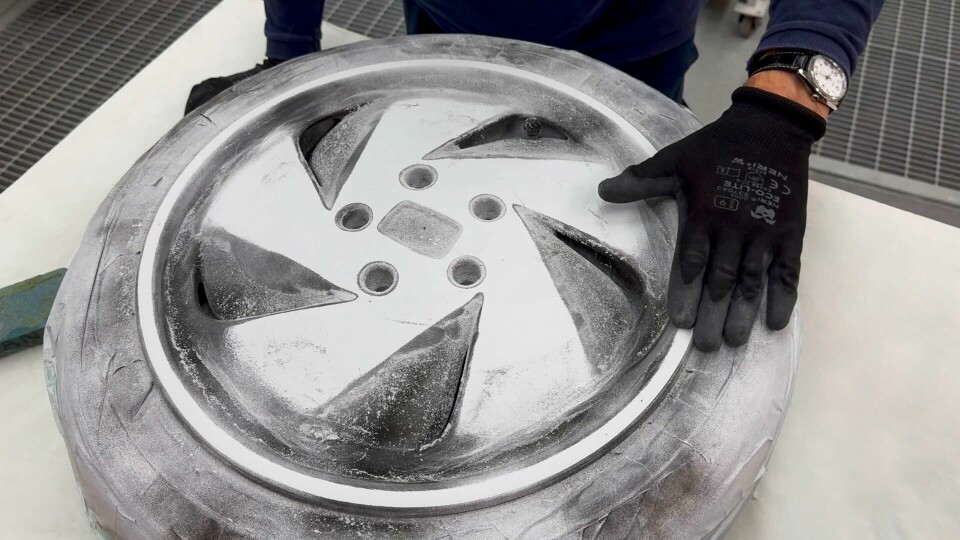
The bulk, weight and cost of these platforms is somewhat disturbing, and a real re-invention of what constitutes a relevant automobile for the future seems overdue. It’s more easily said than done, but I am excited about new ideas that fight this vicious circle of ever more weight, power and features. I believe we need to find a new design and development approach much more akin to the user-centric approach found in architecture and product design.
CDN: Is there a reason for car companies to play it safe and offer models that look and feel so similar to those already on the market?
FK: Well, regarding the convergence dilemma, one needs to look no further than the hyper-segmentation of today’s market, producing too many similar products from once very different brands. An obvious one is in the electric mid-size sedan segment, where almost everyone seems to follow the same recipe: take a fastback silhouette, add frameless doors with flush glazing and flush door handles, horizontal light bars front and rear, and soft surfacing.
Surface animation is then employed to create a specific character, but in my opinion, this cannot disguise the utterly generic basic ingredients. In markets with strong EV penetration like in China, these trends have led to a perplexing situation on the streets. The same must be said for many crossovers and SUVs globally. Who could have imagined that brands as diverse as Mercedes, Citroen and Porsche nowadays offer essentially identical silhouettes and drivetrain layouts in the mid-size SUV segment?
CDN: What do you hope for in a new generation of vehicles?
FK: I think as designers we must allow customers to fall in love with cars again. One path might be to investigate the potential that new and better materials have in order to reinvent car interiors and exteriors alike, making them relevant to future drivers and passengers. While there are already some very promising interiors using innovative materials from the likes of Peugeot, BMW, and Kia, I feel that there is so much more unmapped territory to explore. And innovation is meaningful only when it offers better solutions to consumers, and that means we need to ask the right questions. What do we need in terms of mobility at different moments in our lives?
The answers might be surprising and unorthodox, but this is where things become exciting again. New services and products might completely change a market, and may, if successful, become a starting point for new brands. This will hopefully lead us away from the currently dominant logic, whereby any given brand selects an existing segment to compete in without ever challenging the basic assumptions. This is ostensibly done to avert risks, like every instalment of a successful Hollywood franchise movie sequel seems to prove. But as the saying goes, the biggest risk is not taking any risks. We need to be brave, fearless and open to spot and embrace the new when we see it.











































